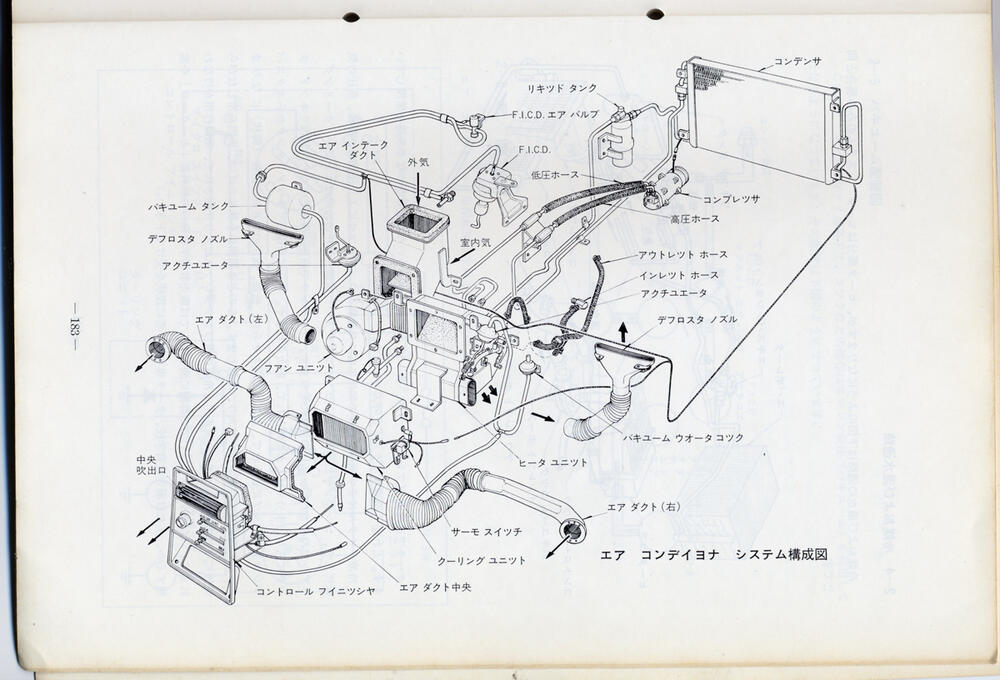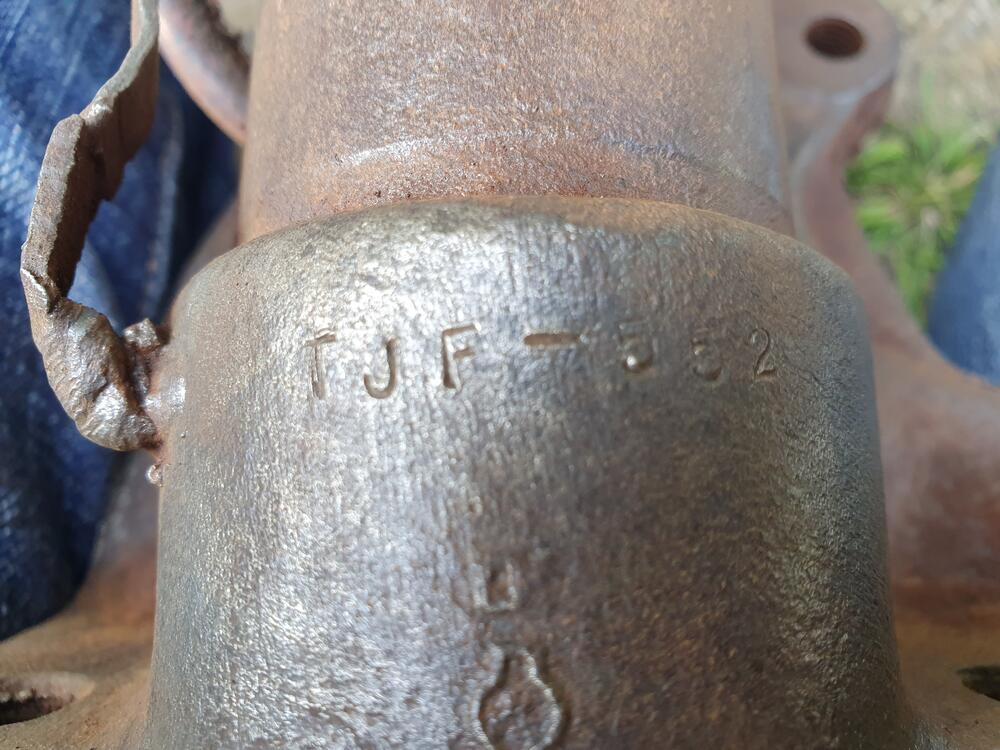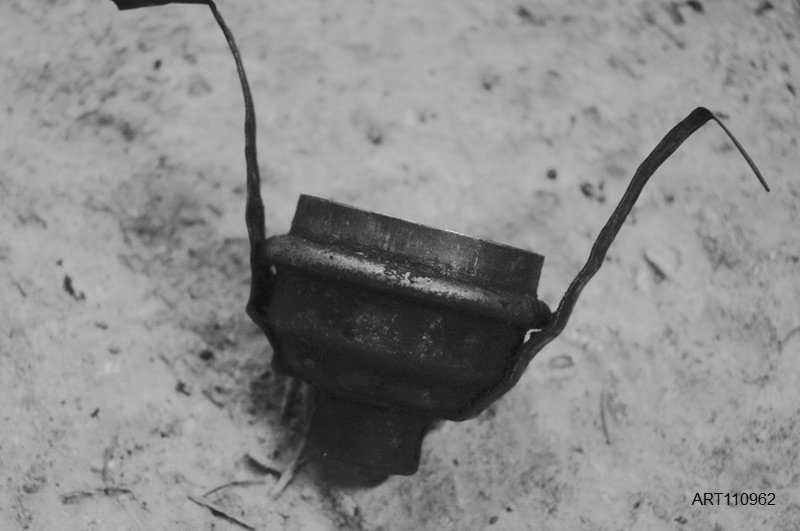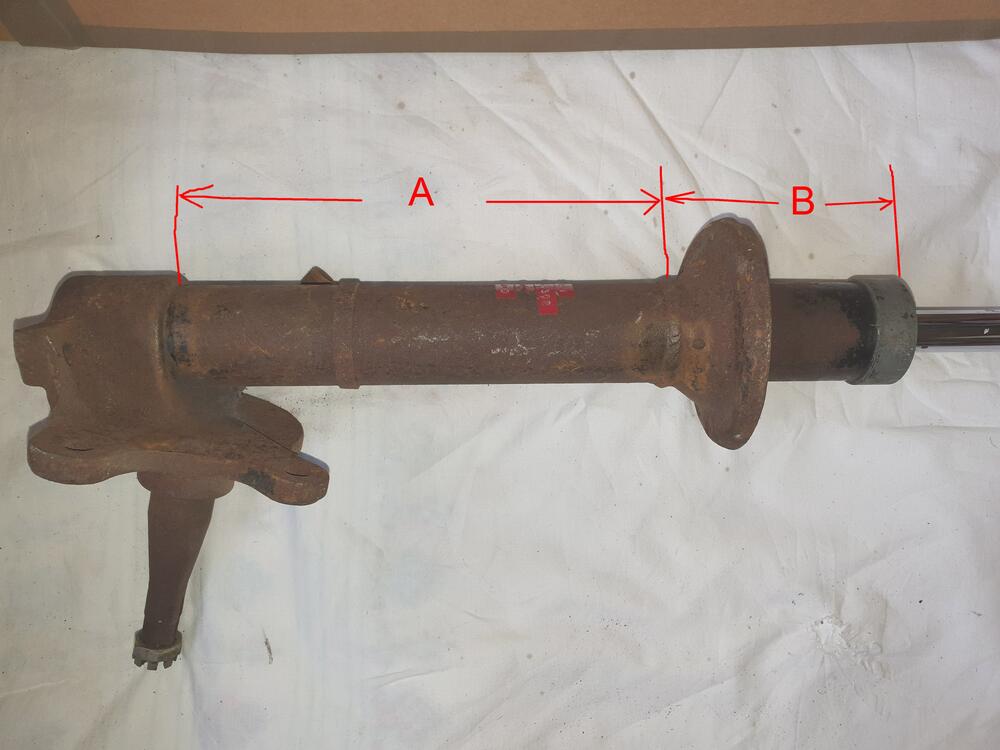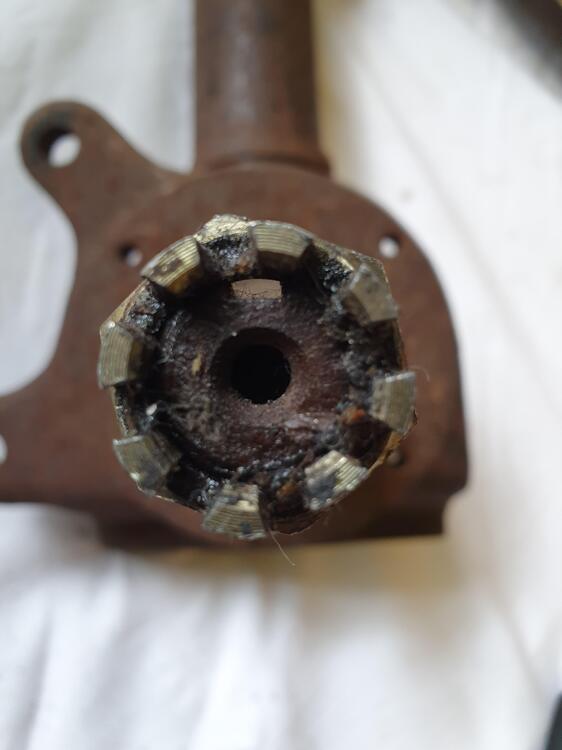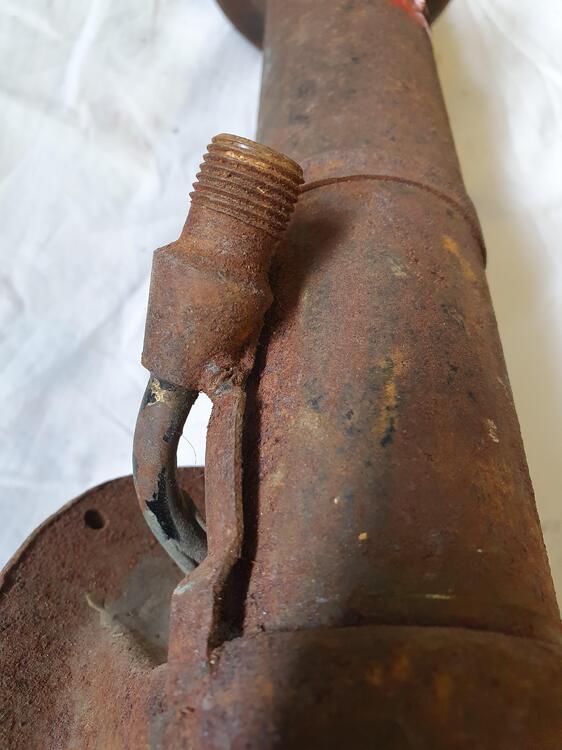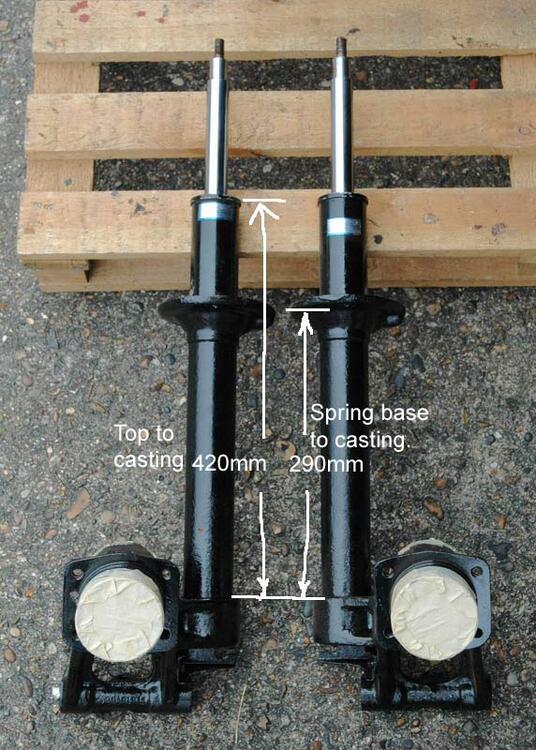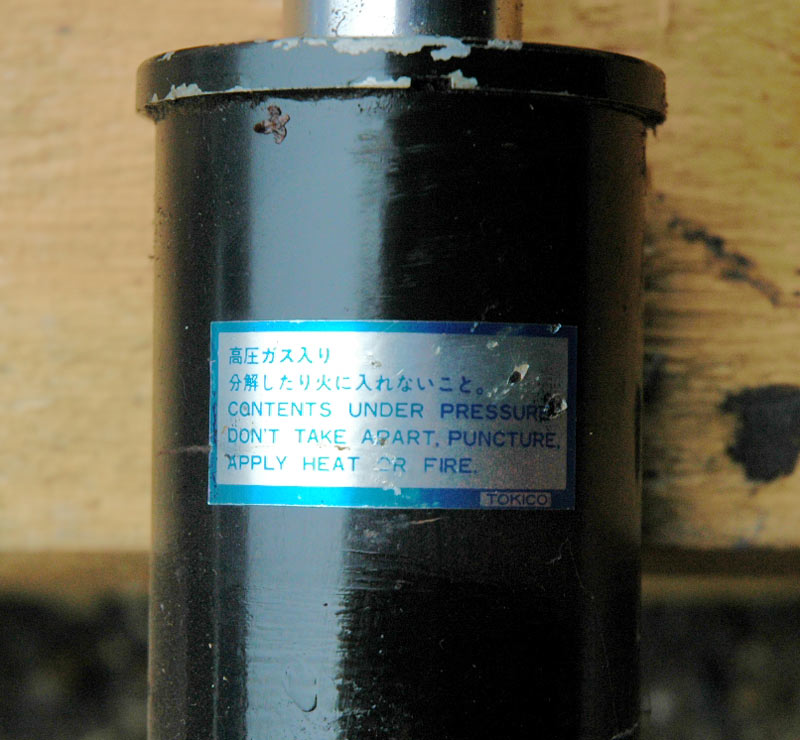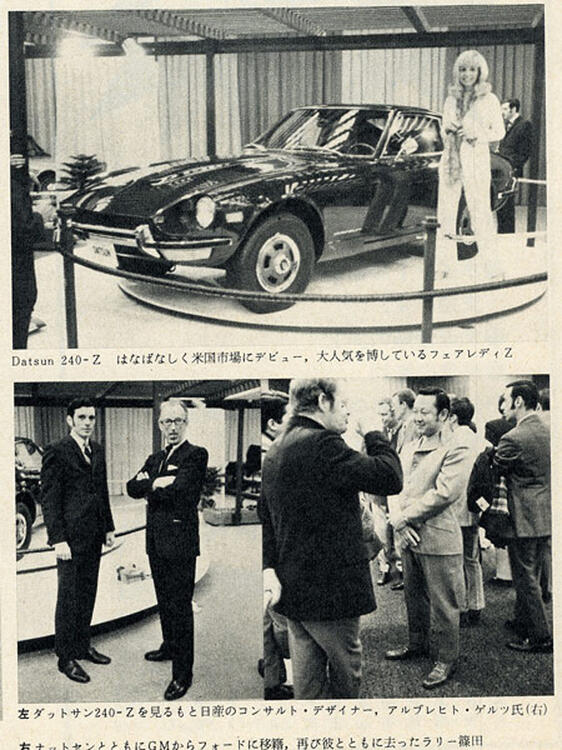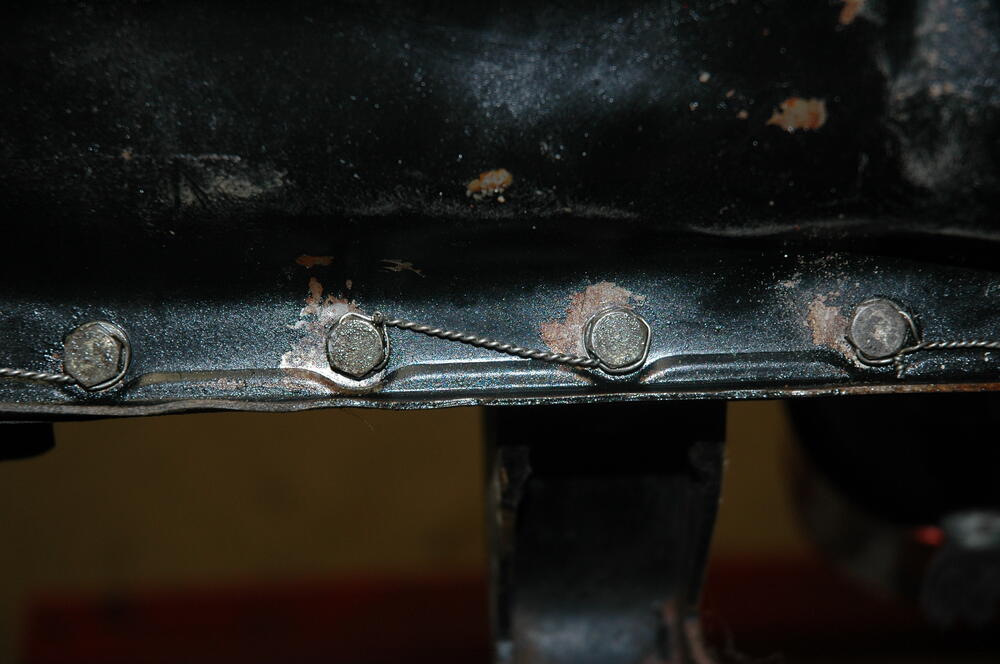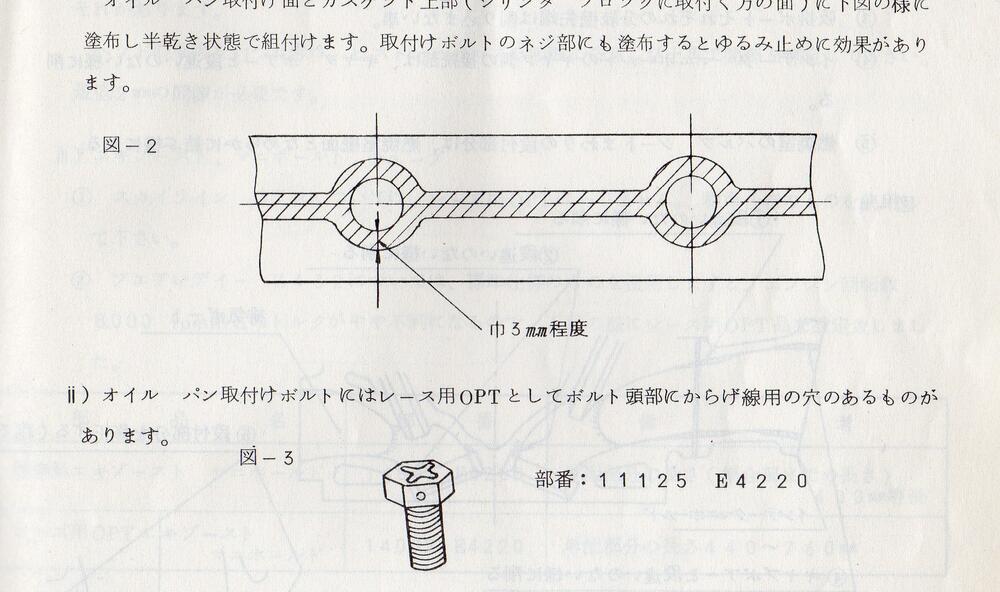Everything posted by HS30-H
-
1970 240Z Works Rally - the road to restoration
A wise choice, in my opinion. It can be difficult to know where best to wind the clock back to, or indeed whether the clock should be stopped in just one place... Kevin Bristow faced a very similar dilemma when he acquired 'TKS 33 SA 3640'/'PTE 337L'/'HS30-00879', his 1971 RAC (and more...) Works 240Z rally car. He had to contend with period-repaired damage, deterioration and further damage - caused by decades laid up - as well as a few missing parts. He finally targeted a restoration of the car to the way it was immediately prior to the start of the 1971 RAC Rally, but - pragmatically - also including some of the patina and minor modifications it received in its post-71 RAC rallying career, each of which has its own story to tell us. I think it turned out well. The trick is to avoid throwing out the baby with the bath water.
-
1973 240Z Heater Control Panel
Yes, nascent factory AirCon-related mounts and fixings. RHD heater/blower layout is handed differently than LHD layout. In RHD layout the main heater box has the fan duct on opposite side to LHD layout, so you cannot use RHD version on LHD car and vice-versa. Japanese market got option of factory air conditioning from 1969, so the non-AirCon RHD systems have prep for mounting the extra AirCon-related components. LHD-specific components appear to have some of the same prep. Here is an illustration of the RHD factory AirCon from the 1969 'Z1' Nissan 'Servce Shuho' booklet:
-
1970 240Z Works Rally - the road to restoration
Here's a further reference piece from Ye Olde Black Museum of Original Works Artyfacts. Another 'short', oil-filled, non gas-charged, fixed-platform Works front strut. It has lost its original DYMO labels, but there are some Turin Shroud type witness marks in evidence. I can certainly read 'NISSAN', 'TOKICO' and a 'TKJ' prefix which corresponds with 'TKJ-552' stamped into the spindle casting. This would correspond to the '70 and '71 season fixed platform type Works struts. 'A' and 'B' dimensions, also the strut tube diameter, are same as the Y0901-54302 I posted earlier, but this time with a beefier damper rod at 25mm.
-
1970 240Z Works Rally - the road to restoration
-
1970 240Z Works Rally - the road to restoration
The front spindles were drilled for the Halda drive cable to pass through, with a specially-adapted hub bearing cap holding the (square) end of the cable so that it was forced to rotate with the wheels. The Haldas were geared to translate that wheel rotation into an accurate measurement of distance travelled per revolution. The Navigators were equipped with pre-set computations for different tyre selections. Note the special bearing cap and its tabs which were clamped firmly between the wheel and hub:
-
1970 240Z Works Rally - the road to restoration
OK, here we go. Please excuse the crappy graphics... My Y0901-54302 (it came to me as an 'ex-Monte Carlo' Works strut) measures as follows: Dimension 'A' (spindle/hub casting to centre of spring perch weld) = 240mm Dimension 'B' (centre of spring perch weld to top of damper retaining cap) = 115mm Strut tube diameter is 51mm Damper rod diameter is 22mm Spindle is drilled for Halda cable with outer cable connector welded to strut tube with steadying bands. This appears to be the 'early' type Works Tokico-built unit without gas charge to mitigate oil foaming, as seen slightly later. Can take any other measurements you need. Reference photos:
-
1970 240Z Works Rally - the road to restoration
The switch was at some point in 1972. Both the extant remaining '71 season cars - '8511' '71 East African Safari Rally winner and '3640' '71 RAC Rally car - have fixed platform struts, although the Safari car has the type with the strut tube that detaches from the hub casting. The other two extant remaining cars - '4150' '73 Monte 3rd place winner and '7924' '73 Safari winner (originally a '72 RAC car) - both started out with adjustable platform type struts, so not much use as reference points here I think?
-
1970 240Z Works Rally - the road to restoration
In my black museum of leftover Works rally parts, I have a front strut that came to me described as a 'Monte Carlo' tarmac setting item. It carries Works part number Dymo tape labels 'Y0901-54302' and has the proper Works type Halda drive take-off. I will dig it out of storage and take some measurements.
-
1970 240Z Works Rally - the road to restoration
I've been away on a trip to Japan, so a little late answering. Sorry. The 54302/54302/54010 etc etc prefixes on the stock & option strut components simply identify the part according to the Nissan parts numbering system, where 54 denotes front suspension section, 000 up denotes front springs, 200 up spring mounting parts, 300 up suspension crossmembers & 400 up suspension assembly parts. The Competition Department in Japan used these as suffixes in their unique (Works) part numbers, so I guess it makes sense that they correspond somewhat. I'm not sure that the E7220 Rally Option struts and springs are going to be much use as reference for you. I own a set and they have looooong tubes and looooong springs, putting the car up at 'Safari' type ride heights for max travel and ground clearance. They are oil-filled and also gas-charged, but I'd say they are a step below the Works type parts in sophistication and build quality. They were probably OK for a 'Clubman' type rally car in period, but my friend Kevin Bristow used them on his car 'OMT' (prepped in period by Old Woking Service Station) and found they they soon overheated on rough stages. Some photos of my set for reference:
- Hagerty Drivers Club
-
Magazines: Perhaps the first German mention of Goertz in 1974
Amazing. First time I've seen that. Thank you. His input for that Steinway piano seems to be more about surface finish than anything else. "By Goertz" was probably useful as something for the sales, advertising and PR teams to get their teeth into though I guess. Goertzlore on display with his remarks about Japan. He tells us that Japanese people were still wearing Kimonos (presumably to set the scene whereby he is some kind of pioneer bringing Western culture to the savages...) but that would be 1860s rather than 1960s, when Goertz started writing letters to Japan and knocking on doors. He paints himself as some kind of pioneer, but in truth he was a latecomer. In terms of industrial design he was a good part of 60+ years late minimum (arguably 150+). But people swallow this kind of stuff whole, don't they?
-
Magazines: Perhaps the first German mention of Goertz in 1974
EXACTLY! I think Goertz wanted people to believe that he was responsible, even if he never said it directly. He wanted to send them down a path where they ended up at that place on their own. That's what has always pissed me off the most about Goertz. He was an intelligent and educated man, so HE KNEW that there was not a single line, not a single curve on the S30-series Z that was his. Nothing. And yet he still wanted the reflected glory, even - latterly - whilst telling people that 'they messed up my design'... Good luck with that Florian. I think I told you the story of when, having sent a letter to Classic & Sports Car magazine here in the UK protesting that their obituary for Goertz was full of lies, I was threatened with legal action by a German friend of Goertz. He even had his legal team telephone me a couple of times. Nothing came of it, but it maybe shows how deep the Goertzlore runs...
-
Magazines: Perhaps the first German mention of Goertz in 1974
I'm happy to believe that we could attribute some elements of styling/design as being typical of particular nations (EG 'Italianate') for certain periods, but as the (design) world got smaller due to international travel, photography and media the contemporary international zeitgeist took over, presuming designers/stylists were given enough of a free hand. For sure the likes of Yoshida, Chiba, Matsuo, Tamura, Abe, Kurisaki et al (the guys who actually did the work that Goertz was claiming credit for) could have sketched a beautiful, pleasing and current form for a car body and they all had technical educations behind them. The 'Japanese can only copy' thing ignores this. However they would have been influenced by the work of others in the same way that all creatives are. This is a totally natural phenomenon. The language of design and styling evolves and spreads in just the same way as - for example - trends in music. At some point we end up with mirrors facing mirrors and endless reflections therein.
-
Magazines: Perhaps the first German mention of Goertz in 1974
You've got the right show. Goertz was photographed there - hanging around the Datsun 240Z that was on display - by CAR GRAPHIC magazine of Japan. I think it goes without saying that Goertz would have been talking up his (non) connection to the new car as soon as it debuted and hit the media in October 1969, so your hunt for the first example of such story being actually published is probably going to be somewhat subjective. Car shows presented great opportunities for Goertz to meet with industry insiders as well as international journalists. This could be a 'Where's Wally' type hunt... I'm not sure what the exact lead time on CAR magazine (UK) was in 1970, but the cover date for UK magazines in that period was usually up to four weeks - possibly more - before publishing, so I would say it is likely the March 1970 cover-dated issue hit the news stands in early February 1970 and the Goertzlore pre-dated the 4/70 NY Intl. show. There are were several other shows in the USA that could be candidates for a Goertz sighting (we have discussed early USA and Canada shows on this forum), and - of course - he could easily have been spreading his story amongst personal contacts between-times. He would naturally have been surfing the buzz about the new car. Here's the photo from CAR GRAPHIC Japan relating to the 4/70 NY show at the Coliseum. The caption below calls Goertz "a consultant designer for Nissan", although - technically - Goertz was never engaged by Nissan as a 'designer'.
-
Magazines: Perhaps the first German mention of Goertz in 1974
Seems logical.
-
Magazines: Perhaps the first German mention of Goertz in 1974
I think the 507 looks OK until you see somebody sitting in (on) one. At that point, it turns into a kiddy's fairground ride. And here it is again. The bald and simplistic idea that the Japanese 'copy', as though its a one-way street. And from a Dutchman too. Maybe another tour around the van Gogh museum in Amsterdam might put it into context somewhat?
-
Magazines: Perhaps the first German mention of Goertz in 1974
Hi Florian, and welcome. Well, for sure it had to come out of Goertz' mouth first. Apparently he was telling anybody who would listen that *he* had 'designed' the Z as soon as it debuted. We can even see him hanging around the car in photos from the 4/70 New York International Auto Show. Networking and hustling... From the Feb '74 Rallye Racing article: "The creator of this entirely un-Japanese looking car is the German AIbrecht Graf Goertz, an industrial designer. He provided the body design for this sports car first introduced in 1969." Coincidentally, I came across a similar "un-Japanese" quote earlier this week in a YouTube clip. But what does it actually mean? If the styling of the S30-series Z is "un-Japanese", then what does a 'Japanese' car look like? There has to be a thesis for their stated anti-thesis. The quote I saw came from somebody who was convinced it was Goertz' creation. We know it wasn't, so I wonder if knowing that would make it any more - or less - "un-Japanese" to his eye? At the very least it is a stupid thing to say, at worst it verges on xenophobia. Underestimation of Japan and the Japanese can often be sniffed between the lines in that period, and that will - in my opinion - have bolstered Goertz and his rather tall stories. The inference is... the Japanese didn't do it. And not only that, the Japanese couldn't have done it even if they wanted to. Sorry, I don't think I can help with any earlier sightings of Goertzlore than the 1970 CAR Magazine example, but thanks for bringing the topic up again and allowing me to stick another pin into my Goertz voodoo doll.
-
Datsun-240z Vs Fairlady-z432
That's a nice purchase, Kats. I am jealous! Quite possible it did indeed come from SS KUBO. Kubo san acquired many parts from Tomei, Scuderia Nissan and the Works team over the years he was involved in racing and afterwards. He picked up a lot of rare parts. There's a small mention of lockwiring in the first Nissan Sports 'Yellow Book' from 1970. This was for the oil pan bolts, but - as Patcon mentions - this was common in aviation and specialist machinery preparation since the beginning of the industrial revolution (I've seen it used on steam pumps from the early 1800s...). Typically the bolts are locked against each other to stop loosening from vibration. Here's an example from a Works rally L24:
-
1970 240Z Works Rally - the road to restoration
That series of photos was taken by Rob Janssen's friend and navigator Jaap Dik, who carried a camera with him on the events they took part in. For sure a rock star move, but they had little to no option. No private jet home for them whilst others swept up the mess. Heroic privateers on a shoestring budget!
-
1970 240Z Works Rally - the road to restoration
Something we have discussed before, but is it not a possibility that OWSS simply supplied and fitted a set of the taller RAC type springs to use on the same Monte struts originally fitted to the car? I would think, what with Works parts being in short supply in-field (I am in possession of much period correspondence where OWSS, Datsun UK and various privateers were all trying to get hold of Works-specific spares in order to use Works cars that they had care of) that could have been a possibility. Have you got any intact part number alloy tags or painted numbers on the springs? Any legible Dymo tags on the rear strut tubes?
-
Datsun-240z Vs Fairlady-z432
Wow. Excellent!
-
Datsun-240z Vs Fairlady-z432
I have an earlier repro on my Pretend-R. Technically speaking I guess the genuine PZRs didn't need this part as they didn't have the air filter housing, air filter duct and airbox (running open trumpets) in the way, but I like it in any case.
-
Datsun-240z Vs Fairlady-z432
Attached some photos of a couple of rare original examples I have handled. Your repro example looks accurate, and even has the seam in the middle that was missed off in previous repros. Seems there was indeed a foam gasket on the inner fender flange, so you have done what the factory originally did:
-
Datsun-240z Vs Fairlady-z432
Hope that helps. Happy to take any other measurements/photos if required. Can't help with any identifications here I'm afraid, although I have seen brackets in that area on C10-series GTR-specific aftermarket manifolds in the past, bracing them to the bellhousing. Actually I have seen many, many aftermarket exhaust manifolds for these engines. Some of them were one-offs or made in really small batches. The ex manifold on my KPGC10 was made by a race car builder called 'Ito Racing' specifically for the car in the late 1970s, and was beautifully made in the old school sand-filled hand-bending method. It would have been almost impossible to identify without the knowledge passed-on by the previous owner, who commissioned it.
-
Datsun-240z Vs Fairlady-z432
Here's my early 1970 PS30-type S20 OEM exhaust manifold and the dimensions from the centre of the rearmost hole in the mounting flange horizontal to a 90 degree line from the mounting face of the 'binocular' flange and the centre of its innermost bolt hole (does that make sense?). Anyway, pictures saving words:






